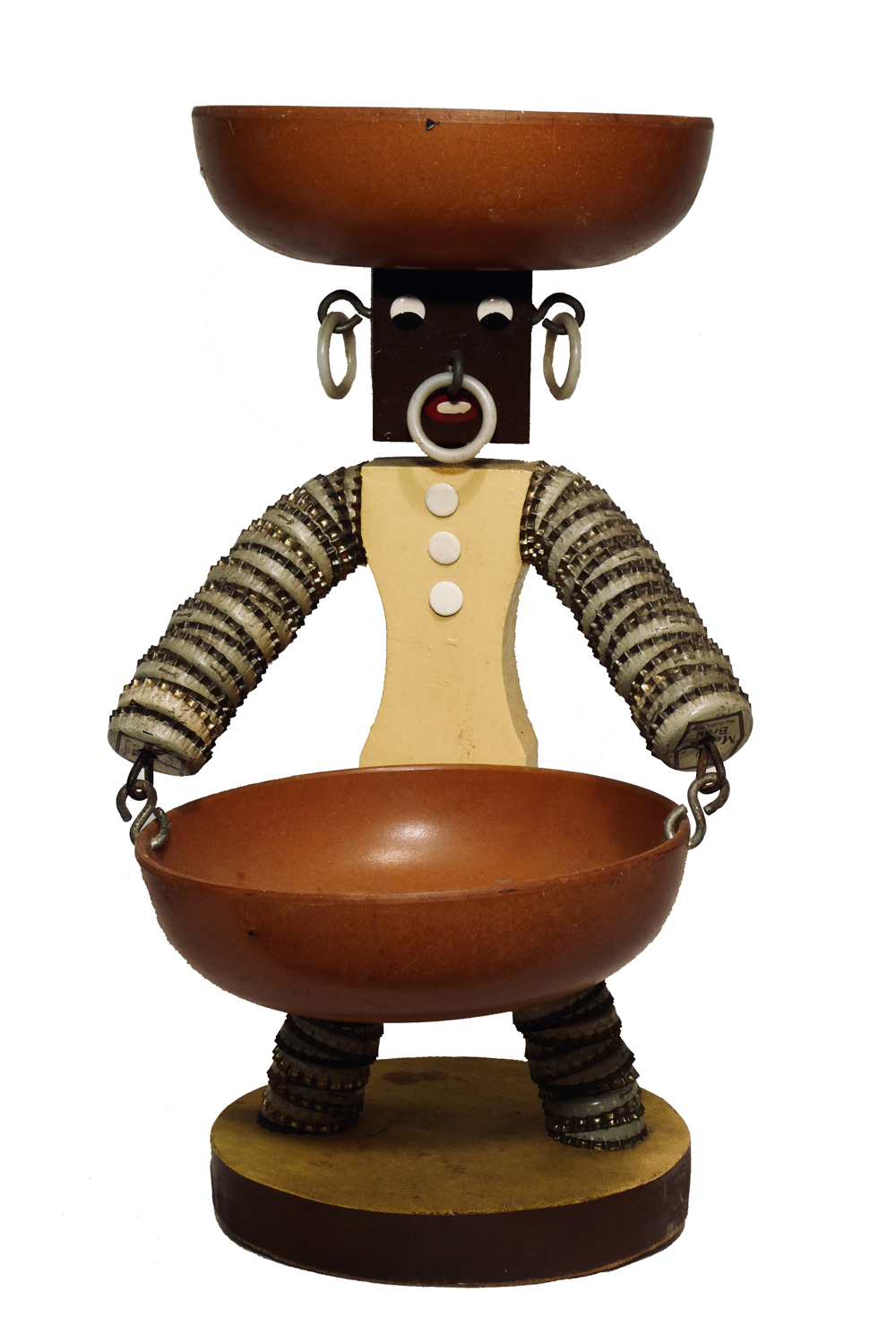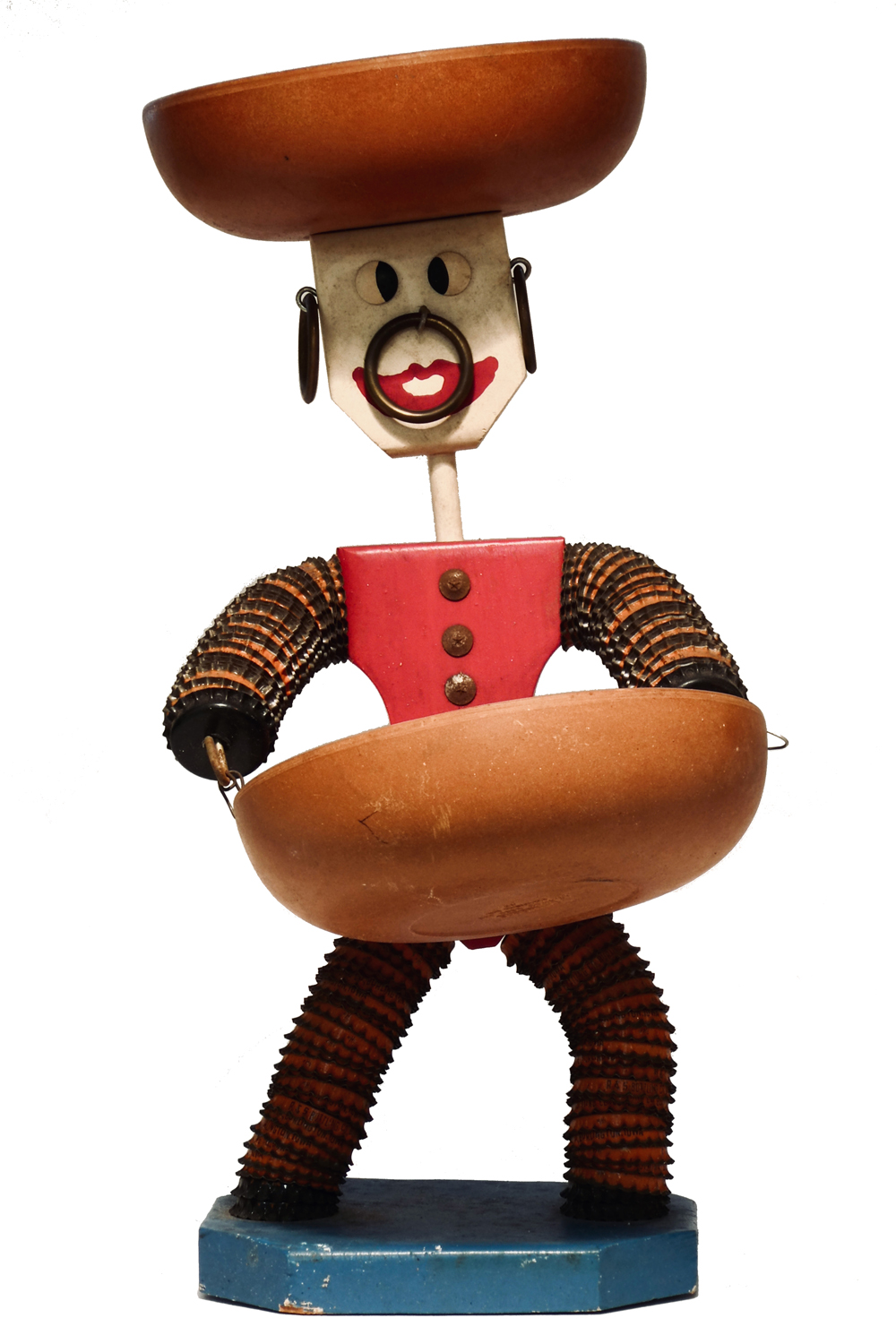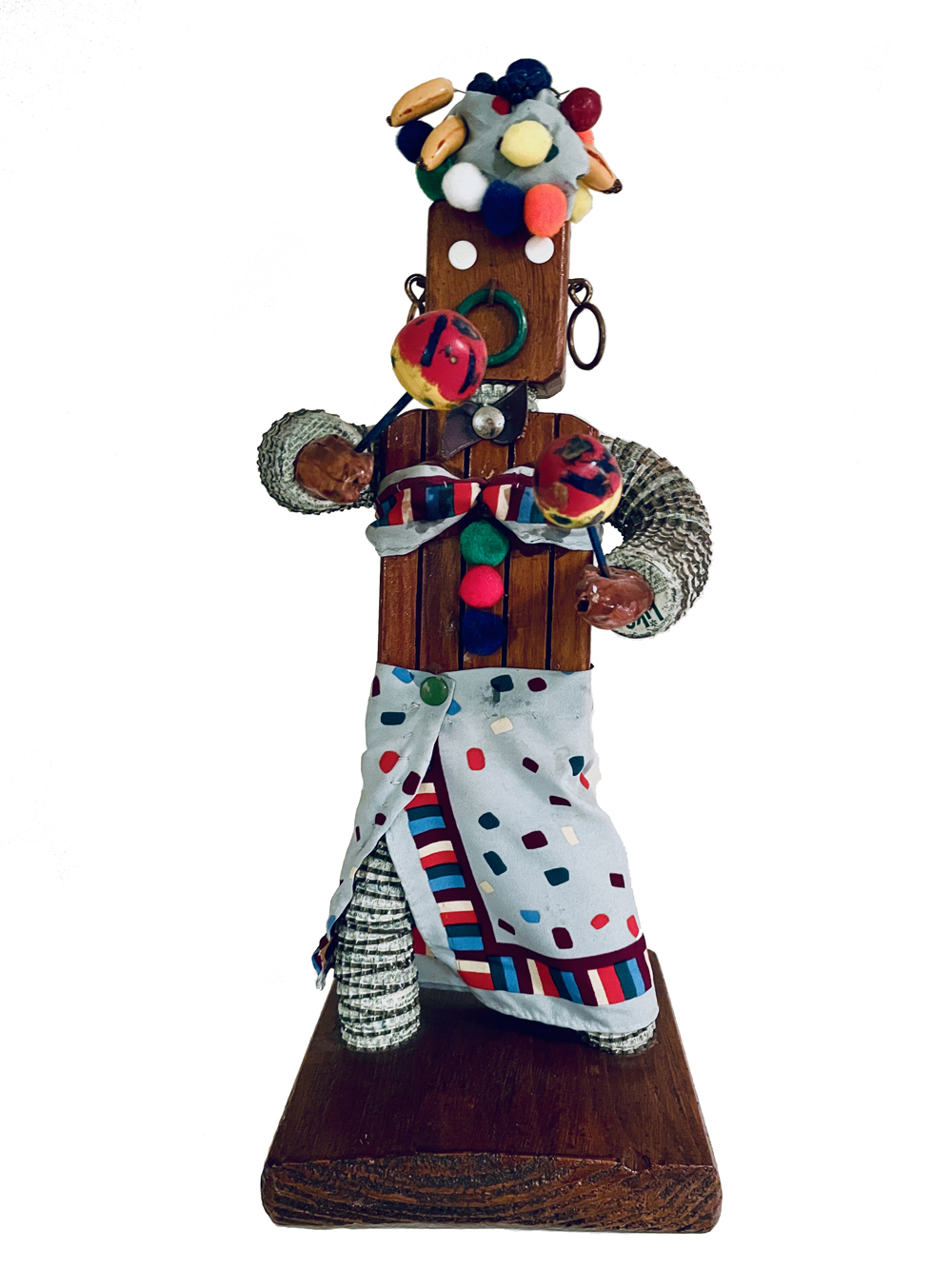Unsealed: Bottle Cap Art | The Woolseys | The Patent Drawings | How To | The Race Question | The Blockbuster
The Galleries: Masterworks | Troops | Signed | Flashers | Other Shapes | Mine | Bottle Cap Inn | Two Monuments
In the decades leading up to the 1960s heyday of bottle-cap figures, creators of all kinds routinely used crude, often-comic, stereotypes of blackness for parody, exoticism, local color, or slapstick interludes. Considering the popularity of Sambo, mammy, spear chucker, and pickaninny images, it doesn’t take a big leap to discern casual racial appropriation in some bottle-cap art.


But it does require a bit of speculation to project a racial identity onto the figures, given their minimalist features. For any one that is painted black, there is typically an otherwise identical piece of a different color. Simplicity and availability of materials is as good an explanation as racial stereotypes for those nose rings and ear hoops.
If a stereotype is there, a relatively benign one seems possible, one suggestive of Carmen Miranda and her Latin/Caribbean associations rather than Aunt Jemima. (The bowl usually attached to the head echoes Miranda’s signature headdress.) Or, as collector Wendy Cohen points out, the model might really be Harry Belafonte and the puffy, ruffled sleeves of his Day-o period. Her explanation: “This is why most of the bottlecappers are black men & woman…. They are Jamaican!”
Michael Hall, an artist, collector and scholar, points out that the 1950s and ’60s witnessed a fixation on the Caribbean, seen as an “exotic, friendly, welcoming place.” In his view, the young people who made many of the bottle-cap figures intended them to be tropically flavored pieces welcoming visitors to the house. “It fits the time frame, it fits the imagery, and it fits the age group,” Hall says.
Still, the exotic look and the air of mystery around the figures allow for all sorts of claims, and a racial angle can be a marketing plus. Dealers occasionally go so far as to sell them as black folk art, an irony Hall finds telling.
“They’re sold on these systems of belief, systems of expectations, that are all specious. They’re being pawned off as art by anybody but middle-class white kids,” he says. Their probable origin in Junior Achievement and Boy Scout programs represents, Hall says, “a real sort of glass of cold water in the face to all this mystification that goes on for folk art.”
What bottle-cap figures really demonstrate, he says, “is the idea that we are the folk.”
The folk, of course, can still draw on offensive stereotypes. Although most bottle-cap figures reflect at worst a naive exoticism, some dip into more explicit racial images, like the figures attributed to the Wisconsin Tallboy Master. Although not inherently offensive in their features, their formal attire and functional purpose places them in a category similar to silent butler smoking stands, whose air of servility can legitimately prompt some discomfort. Still, Sambos they’re not, even if their silent simplicity allows for all kinds of interpretations.

Unsealed: Bottle Cap Art | The Woolseys | The Patent Drawings | The Race Question| The Blockbuster
The Galleries: Masterworks | Troops | Signed | Flashers | Other Shapes | Mine | Bottle Cap Inn | Two Monuments

